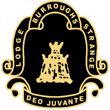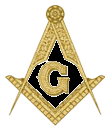
Lodge Burroughs Strange No. 87
Vijayawada, India


Article on Freemasonry - 13
The Last and the Greatest Trial
by W.Bro. P.K.A. NarayananThe three essential features of the ancient mysteries were, firstly, the rite of purification through which the Initiate had to pass on entry into the Society; secondly, the communion with the Deity, Who through the ceremony comes into relation with the Initiated and thirdly, belief in a life beyond the present life - a life which is to come - and securing to the Initiate a happy reception in the world which lies beyond the grave. These three distinguishing characteristics may be compared with the three words; purification, illumination and perfection or concentration, mediation and contemplation.
The first stage comprises of awakening and self-discipline. In it man has to purge himself of the wrong idea that his body and his "lower" selves are his real self and to awake to this reality of his position as a spiritual being. He has to set to work to make his life beautiful, his work good and his thought true. This is accomplished by the practice of concentration. In effect the first stage is one of preparation, of self-discipline and of purification of our moral nature by acquiring complete control over our passions and our lower physical nature. The difficulty of acquiring control over our passions is symbolised in the Lodge by the halting steps by which we advance from the West (the world of time and transiency) to East (the Source of Light). In Raja Yoga these preparatory stages consist of Yama, Niyama, Asana and Pranayama.
The Second stage is that of illumination. In this stage the mental grasp is greatly increased, the difficulties of life understood, the way out seen and in due time, the purpose and meaning of initiation become clearer. He has now begun to acquire the power of seeing for himself into the truth of things and he is expected greatly to increase his power by the practice of mediation. HIMSELF may then be free and independent and in due time manifest its own special type of divine perfection. The difficulty of controlling our inner psychic nature is typified by the steps taken as if ascending a winding staircase. The spiral is the manner in which evolution takes place. We pass through the same processes of birth, infancy, boyhood, manhood, old age and death but at successive higher turn of the spiral. At the end of the spiral we are given a glimpse of the Divine symbolised by 'G'. This is but a glimpse as we have still a long way to go and further disciplines to undergo so as to have control of our spiritual nature. We have therefore to pass through the degree of death and rebirth. Be it however remembered that this is only a symbolic death. This meditative stage is the Dharana and Dhyana of the Raja Yoga. The third stage is that of self-surrender on the one part and union with the Divine on the other. This is the Samadhi of Raja Yoga. This surrender is the surrender of the personal stand point with its prejudices, desires and habits and the union is the union with the Spiritual Pilgrim, with His Wisdom, Power and Immortal Life. In mystical language, the self, when identified with the personal man and his bonds of necessity is said to be dead and when it is realised that it is an immortal pilgrim who has created its personality as an instrument for the further knowing of truth, it is said to be rising from the dead. So we rise on the stepping stone of our dead selves to higher things. The method by which this consummation is achieved is contemplation.
The last and the greatest trial in the third degree is the surrender of the personal will to the Divine Universal. The Master Mason is enabled to perceive his temporal organisation to have been the tomb of transformation in which the great change has been wrought. It is not the physical death that is portrayed, for he is reunited with the companions of his former toil in order to help others to accomplish, what he has himself achieved. It is a voluntary dying of everything alien to the Real Self and identification with the Real Self.
In the words of Jalluddin Rumi, the 13th Century Sufi mystic:
"Form the moment I came into the World of existence,
A ladder was placed that I might escape;
I died as a mineral and became a plant;
I died as a plant and became an animal;
I died as an animal and became a man;
When did I ever grow smaller by dying;
I shall die as a man to become an angel;
I shall die from angelhood to enter the Ocean of Being I came from;
If my body has aged what matter ? for the soul is eternal young.
Birth and death are but dual aspects of a single process; the alternate swings of a pendulum. Birth draws the soul down, clothing it with the apron of matter, a process inevitably inducing a temporary sense of egoism and self-importance and a tendency to acquisitions and all forms of selfishness. But then to cancel this, comes beneficial Death, reversing and breaking up the egocentric extravagance but leaving the soul educated and enriched by its experience and trials in the body.
An Arabian poet puts it admirably thus:
"A child is born with his hands clenched;
As if desiring to clutch and possess the world,
A dead man's hand lie open, as though saying
Look, I am going away, I take nothing with me."
In the words of a Christian Saint the physical resurrection of Jesus is not the important thing but the resurrection of the Divine. The rebirth of man is an event that happens within his soul resulting in a deeper understanding of reality and a greater love of God and Man. The true resurrection is that which lifts human life to an awareness of its own divine current and purpose. God is perpetual creativity, ceaseless action. He is the son of man, for in man in God born. When the veil between the eternal and the temporal is lifted, man walks with God and as He directs. The Resurrection of Jesus was not the last act of His ministry among men but the first article of faith of the Apostles and the spiritual foundation of Christianity.
To summarise, the spiritual self of man is an atom which has emerged out of the Supreme Self and is charged with the duty of perfecting itself so as to manifest its own particular blend of divinity and bring into waking conscience the clean memory of its life, work and thought on the spiritual plane. This bringing into walking consciousness would never be possible unless the identification with its personality - with its lower self - comes to an end. The death of our Master H. A. is therefore only a figurative death. It is the surrender of this personal stand point. It is not total annihilation but a stepping stone to some thing beyond.
Another great lesson of the third degree, in the physical plane of our daily life, is that fear is born of ignorance. Practice of fearlessness is imperative not only for the seeker of wisdom but also for all who want to thrive in life. The fear of death is born of our ignorance of what is in store for us after death. If we did know this, it is perhaps possible that all of us may be eager to die. Truly speaking death, per se, is painless. What we call death agony is really the affliction arising from the thoughts that we have suffered till freed by death. if during life we merely concentrate on its activities and extension without a thought how we shall one day have to close it, then our life would be completely barren. We should prepare for death with the same zeal and foresight as for daily worked when life declines, we should gradually reduce our worldly activities, intake of food, proportion of sleep and redeem to society such service as is possible; mediate upon God and the purpose of human birth and try earnestly to advance towards its realisation. Every man is part of the divine and hence permitted by God to act according to his individual light. But the last word rests with God and this Divine Play continues.
In conclusion, let us invoke the Prayer composed by the great Masonic Scholar Wilmhurst.
"O, Sovereign and Most Worshipful of all Masters who in Thy infinite Love and wisdom has devised our order as a means to draw Thy Children nearer Thee and hast so ordained its Officer that they are emblems of Thy sevenfold power.
Be thou unto us an Outer Guard and depend us from the Perils that best us, when we turn from that which is without to that which is within.
Be Thou unto us an Inner Guard and preserve our souls that desire to pass within the portal of Thy Holy Mysteries.
Be Thou unto us the Younger Deacon and teach our wayward feet the true and certain steps upon the path that leads to Thee.
Be Thou unto us an Elder Deacon and guide us up the steep and winding stairway to Thy Throne.
Be Thou unto us the Lesser Warden and in the meridian Sunlight of our understanding speak to us in Sacraments that shall declare the splendours of Thy un-manifested Light.
Be Thou unto us the Greater Warden and in the Awful hour of disappearing Light, when Vision fails and thought has no more strength, be with us still, revealing to us, as we may bear them, the hidden mysteries of Thy Shadow.
And so through Light and Darkness, raise us, Great Master, till we are made one with Thee in the unspeakable Glory of Thy presence in the East.
So mote it be !"
